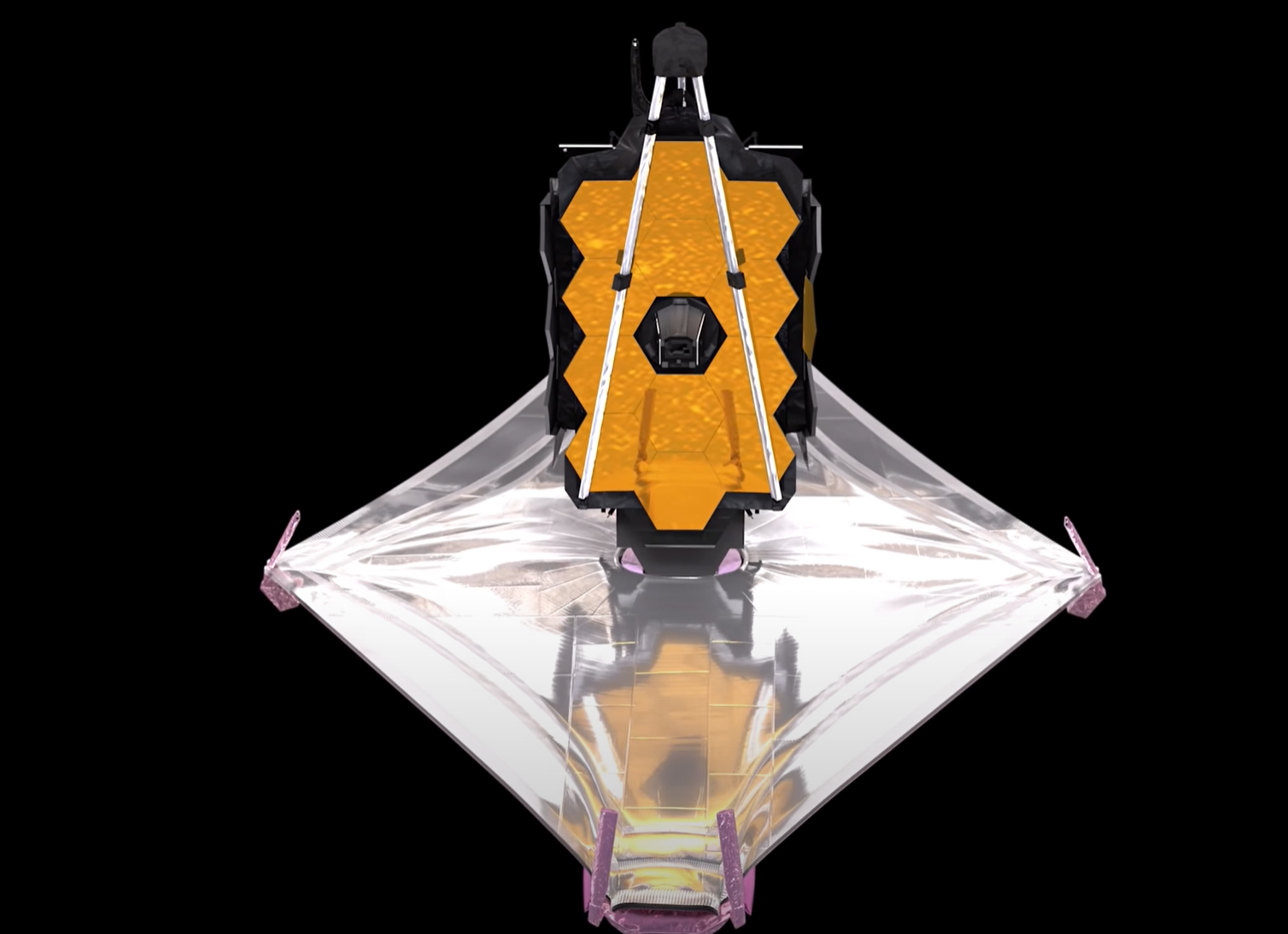
For SpaceUpClose.com & RocketSTEM
CAPE CANAVERAL, FL – Mission controllers with NASA’s James Webb Space Telescope (JWST) have successfully commanded the full unfurling of the massive 5 layered sunshield on New Year’s Eve Friday evening. Dec. 31 – thereby accomplishing one of the most nail-biting operations of the entire high-stakes month long deployment sequence at a distance of some 400,000 miles from Earth while voyaging underway to its final operational destination at a unique orbital perch at the L2 Lagrange point a million miles (1.5 million km) from the Home Planet.
Bottom line is everything continues to progress really great (or nominal) for Webb’s critical deployments as we all ring in the New Year– so far so good for the first of its kind $10 Billion observatory over two decades in the making!
Webb team engineers confirmed the full deployment sequentially of both the left & right side sunshield mid-booms and release of all 107 membrane release devices (MRDs) thus enabling all five sunshield layers to fully unfurl to a diamond shape structure.
“With the successful extension of Webb’s second sunshield mid-boom, the observatory has passed another critical deployment milestone. Webb’s sunshield now resembles its full, kite-shaped form in space,” the Webb team announced in a Dec. 31 blog update post.
The sunshield is critical for cooling the observatory to the utterly cold operating temperatures required so it can detect infrared light for which it was designed in order to carry out its robotic mission as a cosmic time machine peering back to nearly the beginning of time to see first light and explore the formation of the first stars and galaxies in our Universe.
“Shine bright like a diamond,” NASA Webb tweeted. “With the successful deployment of our right sunshield mid-boom, or “arm,” Webb’s sunshield has now taken on its diamond shape in space. Next up: tensioning the 5 sunshield layers!”
Shine bright like a diamond 💎
With the successful deployment of our right sunshield mid-boom, or “arm,” Webb’s sunshield has now taken on its diamond shape in space. Next up: tensioning the 5 sunshield layers! https://t.co/6G2caS1djY #UnfoldTheUniverse pic.twitter.com/q0iuHdnKlN
— NASA Webb Telescope (@NASAWebb) January 1, 2022
The sunshield will allow the telescope to cool down to a temperature below 50 Kelvin (-370°F, or -223°C) by passively radiating its heat into space. The near-infrared instruments (NIRCam, NIRSpec, FGS/NIRISS) will work at about 39 K (-389°F, -234°C) through a passive cooling system. The mid-infrared instrument (MIRI) will work at a temperature of 7 K (-447°F, -266°C), using a helium refrigerator, or cryocooler system, according to NASA.
The enormous tennis court sized sunshield is shaped like a diamond and measures about 47 feet across and 70 feet long (14 by 21 meters) when fully deployed.
The mid-boom deployment process took all day Friday.
Work began in the morning but paused for a bit while the team rechecked to confirm that the sunshield cover had fully rolled up as the final preparatory step before the mid-boom deployment because of some questionable readings.
After further analysis and temperature and gyroscope data indicated the sunshield covers had in fact rolled, the team decided to proceed with the mid-boom deployments.
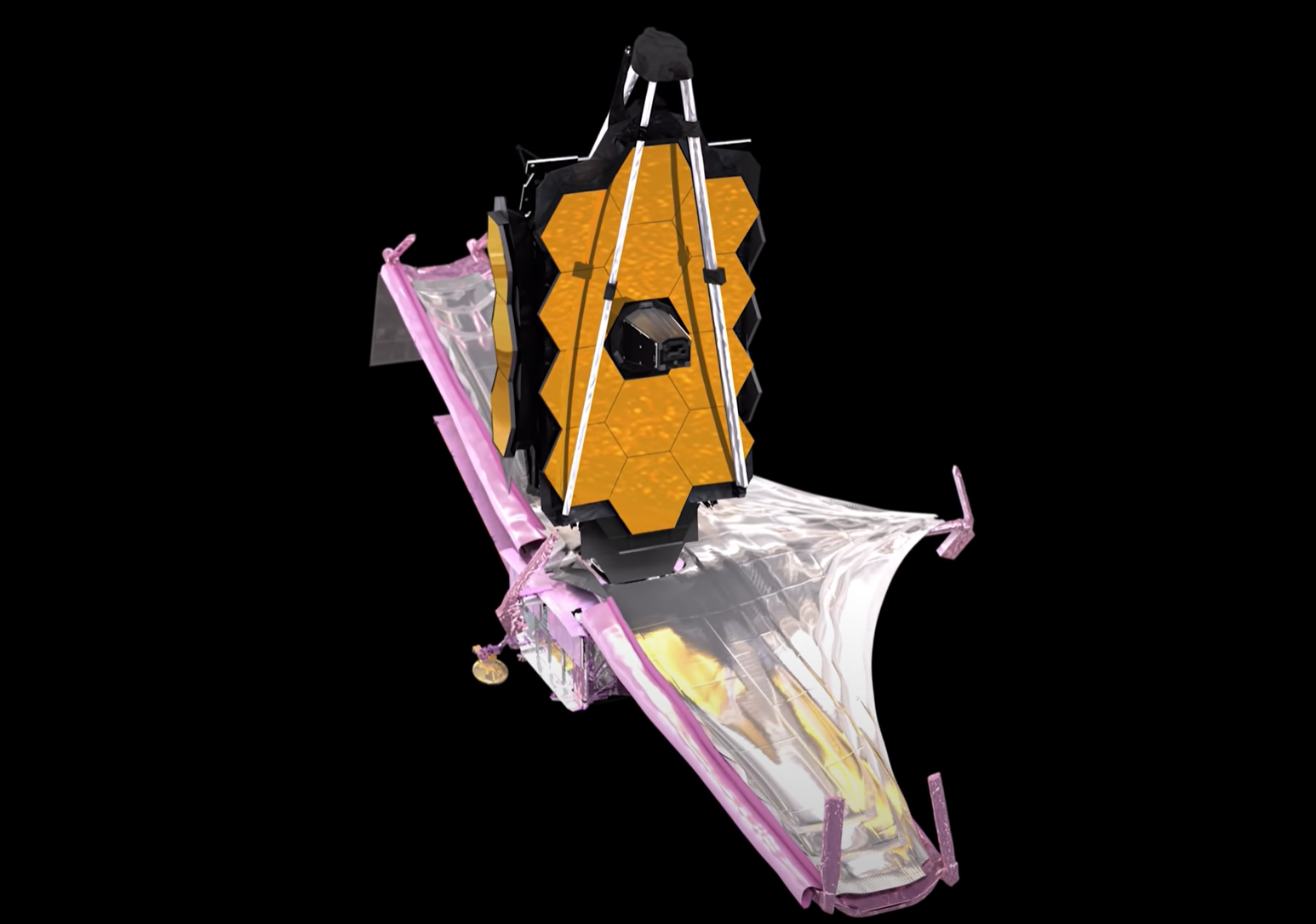
They started with the port (right side) mid-boom deployment around 1:30 p.m. EST, which extended smoothly until it reached full deployment some three hours later at 4:49 p.m.
We successfully deployed #NASAWebb’s port sunshield mid-boom, which pulls out our 5 sunshield layers. While scheduled for earlier today, our team paused to confirm the sunshield cover had fully rolled up: https://t.co/YixL9PI9HV #UnfoldTheUniverse
Thread ⬇️ pic.twitter.com/cDh0Iob5VJ
— NASA Webb Telescope (@NASAWebb) January 1, 2022
Engineers then proceeded to deploy the second (starboard) mid-boom at 6:31 p.m. EST and completed the process some four hours later at about 10:13 p.m. EST.
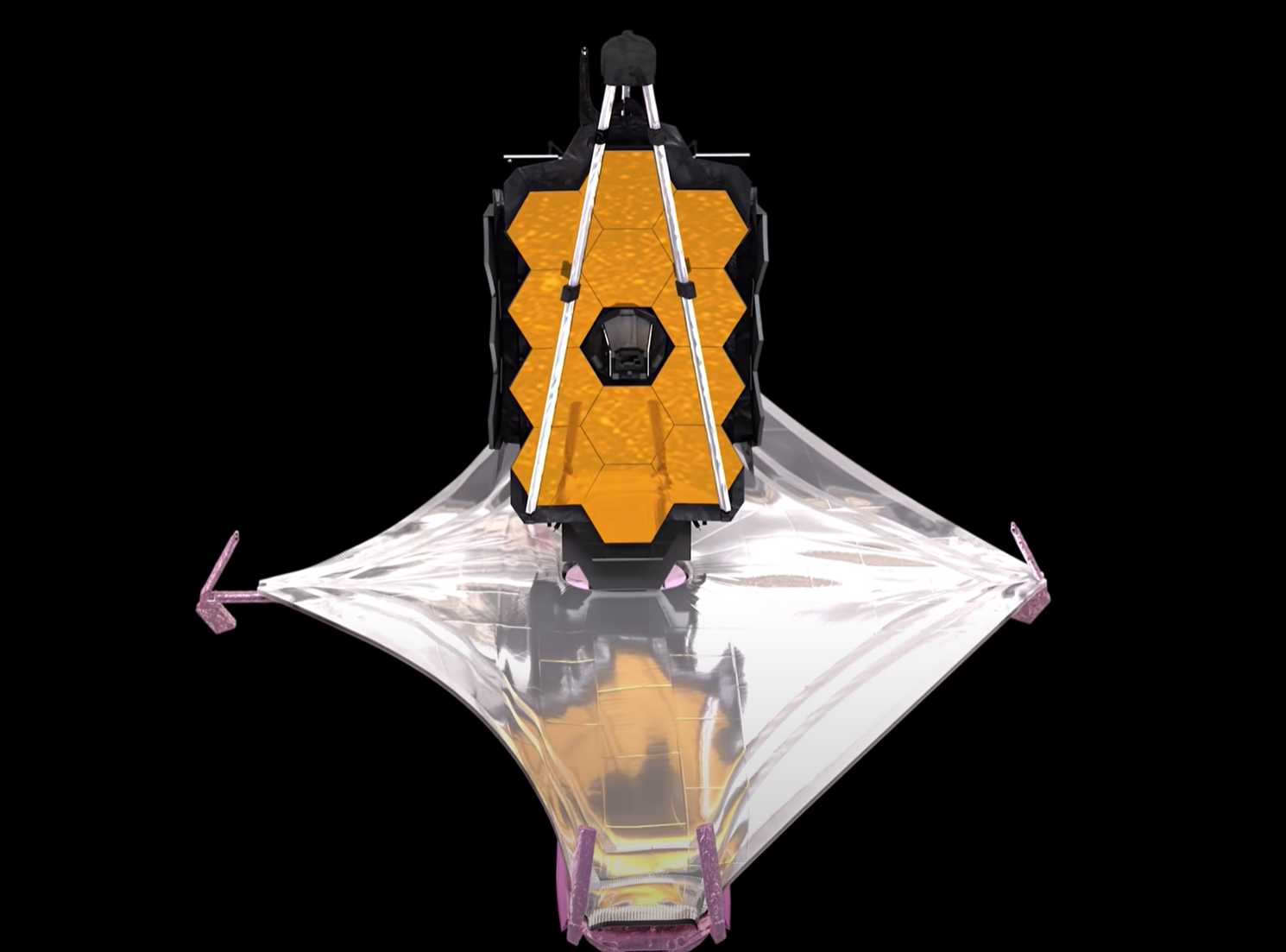
“The completion of the sunshield cover and mid-boom deployments over the past two days marks a critical milestone for Webb: all 107 membrane release devices associated with the sunshield deployment — every single one of which had to work in order for the sunshield to deploy — have now successfully released. Webb has 178 of these ‘non-explosive actuators’ in all; 107 were used to keep the sunshield safe and folded prior to deployment.”
The mid-booms are designed to slowly pushed out horizontally from the spacecraft. They are motor driven and simultaneously pulled the folded membranes of the sunshield out with them.
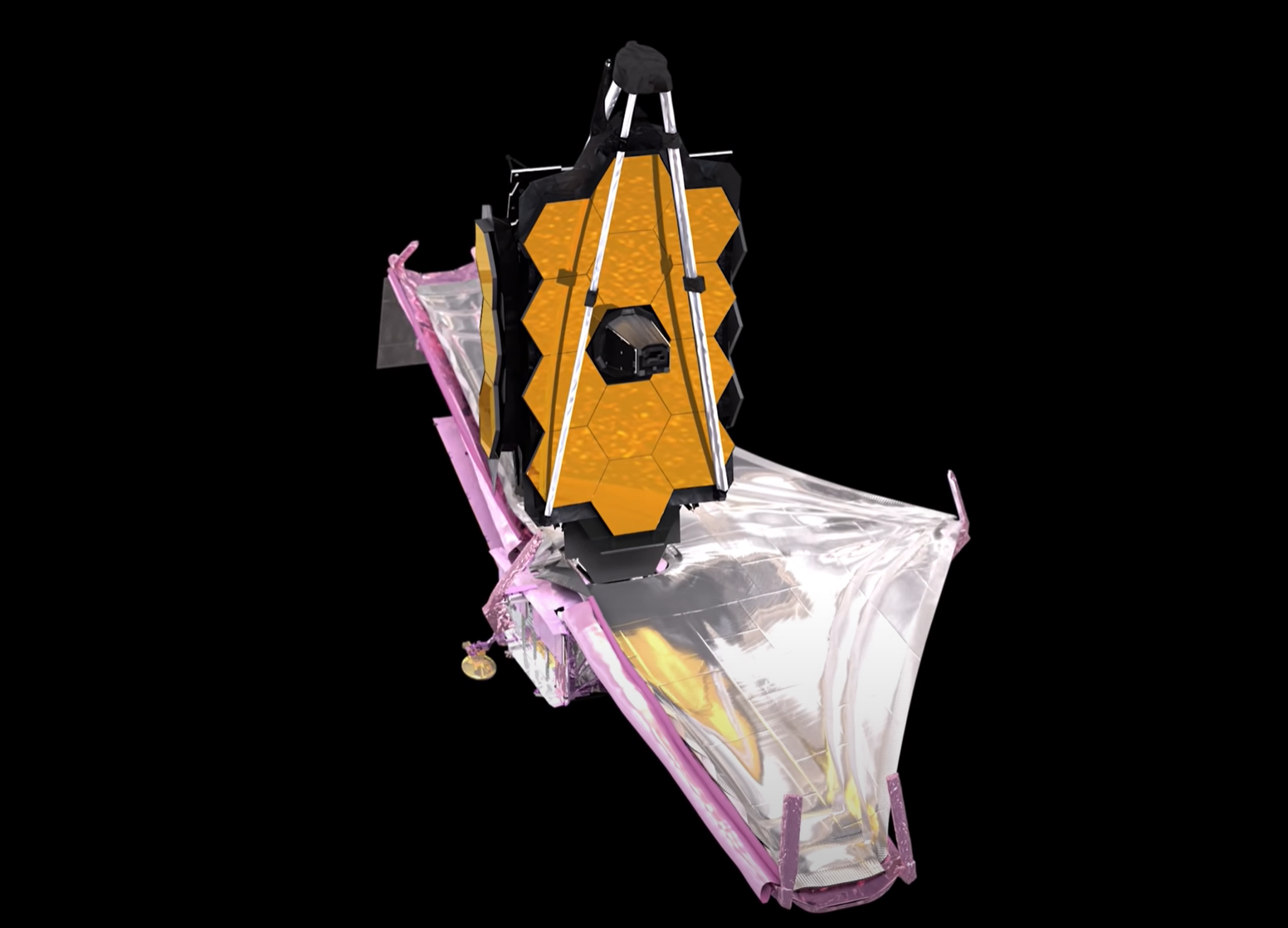
“The mid-booms are the sunshield’s workhorse and do the heavy lifting to unfold and pull the membranes into that now-iconic shape,” said Keith Parrish, Webb observatory manager at NASA’s Goddard Space Flight Center.
“Today is an example of why we continue to say that we don’t think our deployment schedule might change, but that we expect it to change,” Parrish said. “The team did what we had rehearsed for this kind of situation – stop, assess, and move forward methodically with a plan. We still have a long way to go with this whole deployment process.”
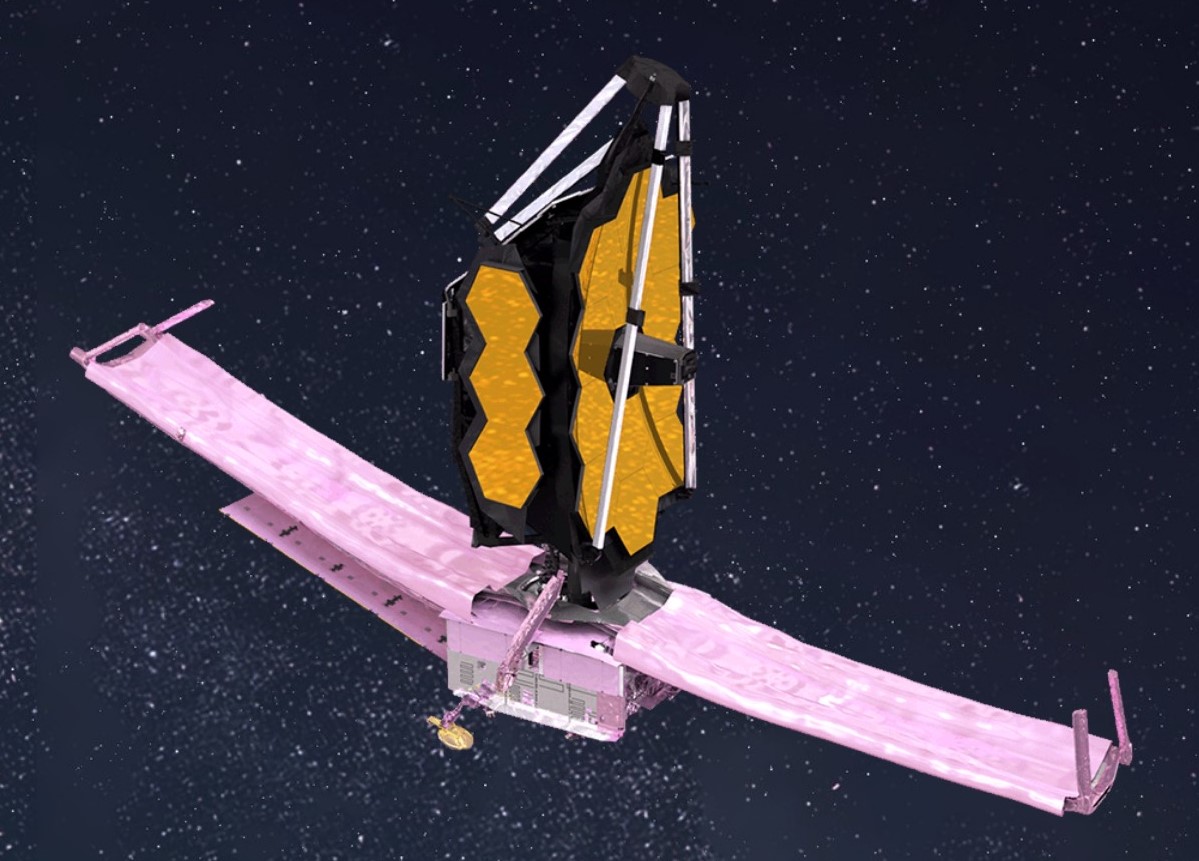
After deploying the sunshield on New Year’s Eve, the team is now taking a well-deserved 1-day rest before proceeding to the tensioning that will take about two days to complete.
#HappyNewYear! As work on our sunshield mid-boom deployments went late into New Year's Eve, our team is pausing activities to rest & prepare for sunshield tensioning tomorrow, Jan. 2. Tensioning is expected to last at least 2 days: https://t.co/OTOsfqur8T #UnfoldTheUniverse pic.twitter.com/5P578bBdj0
— NASA Webb Telescope (@NASAWebb) January 1, 2022
“Work on the deployment of Webb’s sunshield mid-booms went late into the night yesterday. Webb mission management decided this morning to pause deployment activities for today and allow the team to rest and prepare to begin Webb’s sunshield tensioning tomorrow, Sunday, Jan. 2. That deployment is still expected to take place over at least two days,” the team posted on Jan. 1.
“This will likely affect the full timeline for Webb’s deployment. The timeline will be updated as major deployments resume.”
Glad to hear the team is taking a well deserved break before operations begin on tensioning @NASAWebb’s sunshield. Happy New Year! This is the year we begin to #UnfoldTheUniverse with Webb! https://t.co/rDkkRiv0so
— Thomas Zurbuchen (@Dr_ThomasZ) January 1, 2022
The next steps are separating the 5 sunshield layers and tensioning them so they can function to cool the observatory – which is projected to take about 2 days
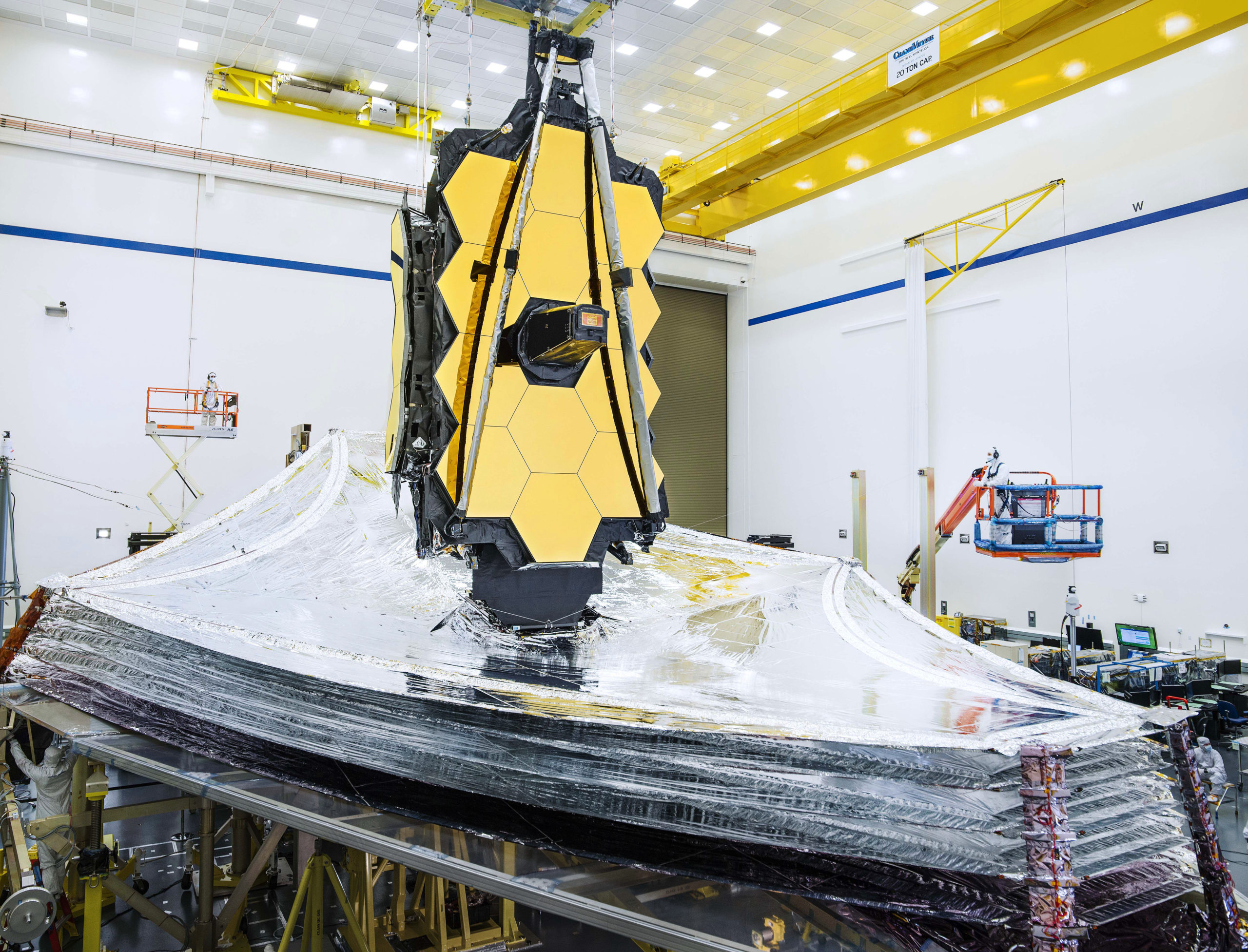
The unfolding events are all part of the 13,700 lbs (6200 kg) school bus sized probes deployment action plan nicknamed ’29 Days on the Edge’
NASA has a detailed plan to deploy the Webb Space Telescope over a roughly two-week period as it simultaneously continues the voyage to its final operational destination at a unique orbital perch at the L2 Lagrange point a million miles (1.5 million km) from Earth.
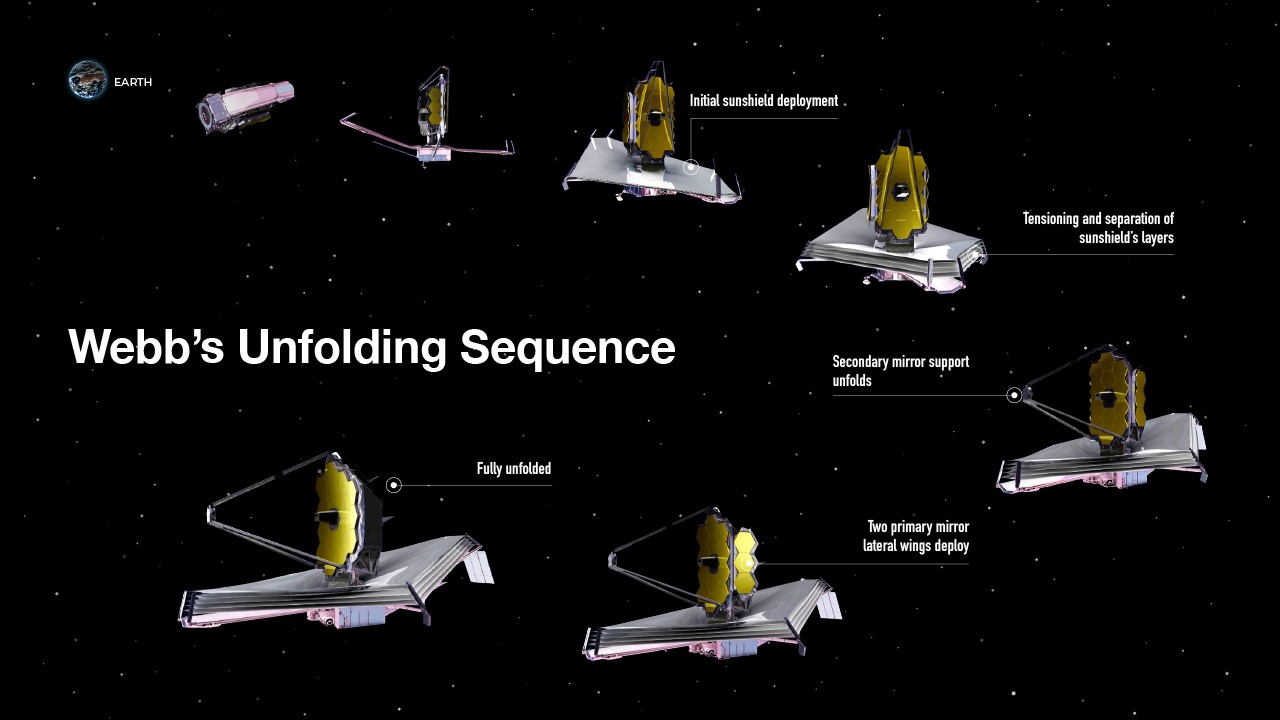
The deployment process is not an automatic hands-off sequence; it is human-controlled, says NASA.
“The team monitors Webb in real-time and may pause the nominal deployment at any time. This means that the deployments may not occur exactly in the order or at the times originally planned.”
Here’s an animation of what the actual sunshield deployment should look like:
Our telescope is blooming like a flower in space! This marks the start of a major phase to #UnfoldTheUniverse: our sunshield deployment. First, what is our sunshield?
5️⃣ layers
🎾 Opens to the size of a tennis court
🛡️ Protects Webb’s optics from the Sunhttps://t.co/tTGIWqFAz8 pic.twitter.com/jRgd8a4sT1— NASA Webb Telescope (@NASAWebb) December 28, 2021
This NASA video details the complex deployment sequence of JWST post launch remotely controlled from Earth:
Video Caption: Engineers on the ground will remotely orchestrate a complex sequence of deployments in the hours and days immediately after the launch of the James Webb Space Telescope. This animation shows the nominal sequence for these deployments. Music Credit: Universal Production Music “Connecting Ideas Instrumental” Credit: NASA’s Goddard Space Flight Center
Happy New Year from NASA and the Webb team!
Start spreading the news! Before the @NASAWebb space telescope works to #UnfoldTheUniverse, it’s making a cameo in Times Square.
Wishing you and yours a #HappyNewYear full of light & discovery. https://t.co/NvuWCUcDAl
📸: @MorganStanley pic.twitter.com/qUW712vDnS
— NASA (@NASA) December 31, 2021
The $9.8 Billion Webb observatory – intricately folded up like origami inside the nose cone – launched at 7:20 a.m. EST (9:20 a.m. GFT / 1220 GMT / 13:20 CET). Saturday, Dec. 25, on a 55 m (180 ft) tall Arianespace Ariane 5 rocket from Europe’s jungle Spaceport at the ELA-3 launch complex in Kourou, French Guiana, on the northeastern coast of South America.
Webb is a joint effort between NASA, ESA (European Space Agency) and CSA (Canadian Space Agency).
JWST is the largest, most powerful and most complex space telescope ever built.
It is also the most expensive science instrument ever costing nearly $10 Billion
It will operate in a halo orbit at the L2 Lagrange point approx. 1 million miles (1.6 million km) from Earth after liftoff and about a 1-month journey.
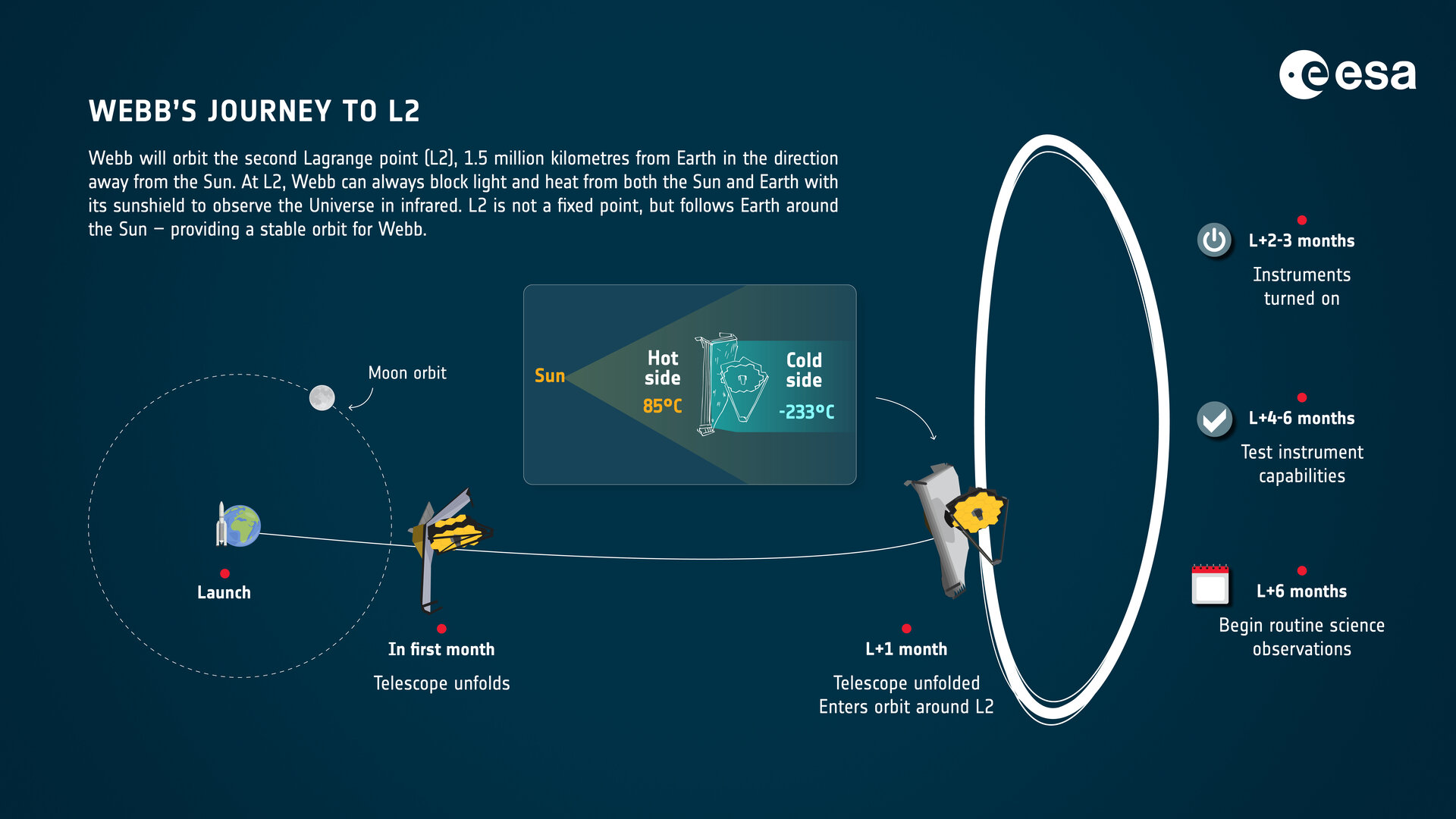
It will serve as the scientific successor to NASA’s world famous and phenomenally successful Hubble Space Telescope (HST).
“The James Webb Space Telescope represents the ambition that NASA and our partners maintain to propel us forward into the future,” said NASA Administrator Bill Nelson.
“The promise of Webb is not what we know we will discover; it’s what we don’t yet understand or can’t yet fathom about our universe. I can’t wait to see what it uncovers!”
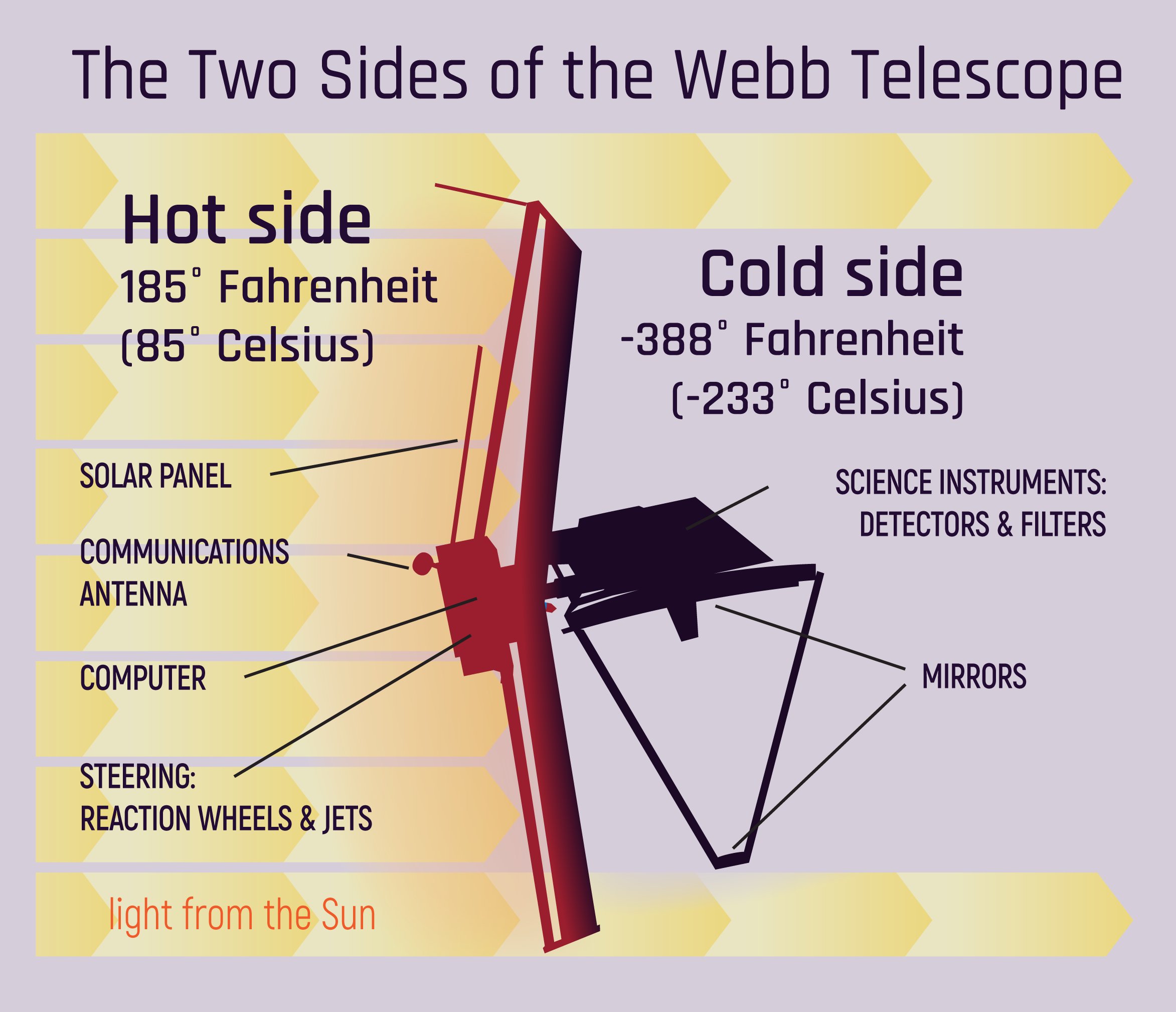
Webb is in many respects a time machine looking back to the formation of the Universe over 13.5 Billion years ago and how we came to be and evolve over the eons.
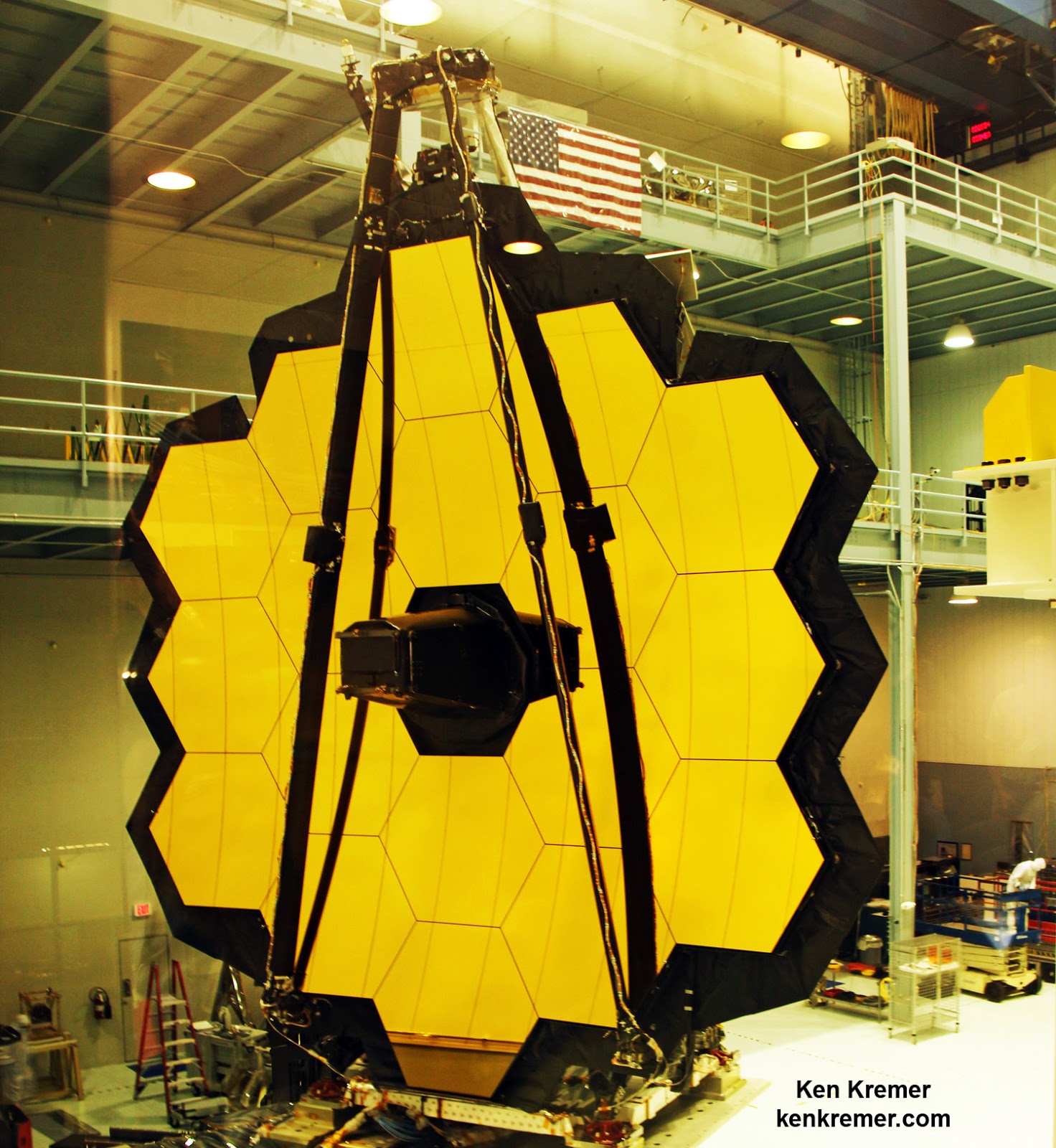
Watch this space for my ongoing reports on JWST mission and science.
Watch Ken’s continuing reports about JWST, IXPE, DART, SpaceX Crew and Cargo Dragons, Artemis, SLS, Orion and NASA missions, Lucy Asteroid mission, SpaceX Starlink, Blue Origin and Space Tourism, Commercial Crew and Starliner and Crew Dragon and onsite for live reporting of upcoming and recent SpaceX and ULA launches including Crew 1 & 2 & 3, ISS, Solar Orbiter, Mars 2020 Perseverance and Curiosity rovers, NRO spysats and national security missions and more at the Kennedy Space Center and Cape Canaveral Space Force Station.
Stay tuned here for Ken’s continuing Earth and Planetary science and human spaceflight news: www.kenkremer.com –www.spaceupclose.com – twitter @ken_kremer – email: ken at kenkremer.com
Dr. Kremer is a research scientist and journalist based in the KSC area, active in outreach and interviewed regularly on TV and radio about space topics.
………….
Ken’s photos are for sale and he is available for lectures and outreach events
Please consider supporting Ken’s work by purchasing his photos and/or donating at Patreon:
https://www.patreon.com/kenkremer
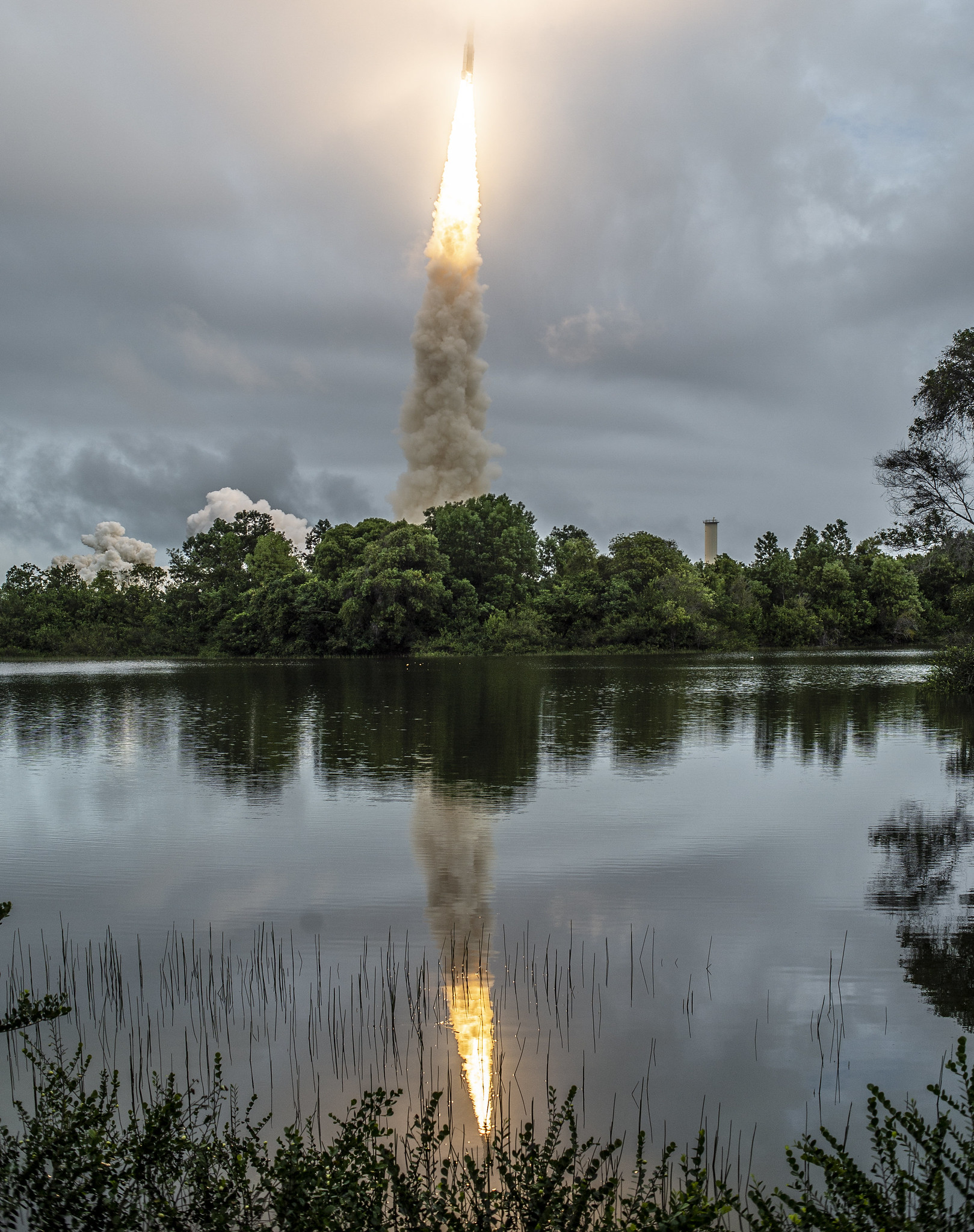 NASA’s James Webb Space Telescope launched Dec. 25, 2021 at 7:20 a.m. EST on an Ariane 5 rocket from Europe’s Spaceport in French Guiana, on the northeastern coast of South America. Webb, a partnership with the European Space Agency and the Canadian Space Agency, will explore every phase of cosmic history – from within our solar system to the most distant observable galaxies in the early universe. Credit: NASA/Chris Gunn
NASA’s James Webb Space Telescope launched Dec. 25, 2021 at 7:20 a.m. EST on an Ariane 5 rocket from Europe’s Spaceport in French Guiana, on the northeastern coast of South America. Webb, a partnership with the European Space Agency and the Canadian Space Agency, will explore every phase of cosmic history – from within our solar system to the most distant observable galaxies in the early universe. Credit: NASA/Chris Gunn
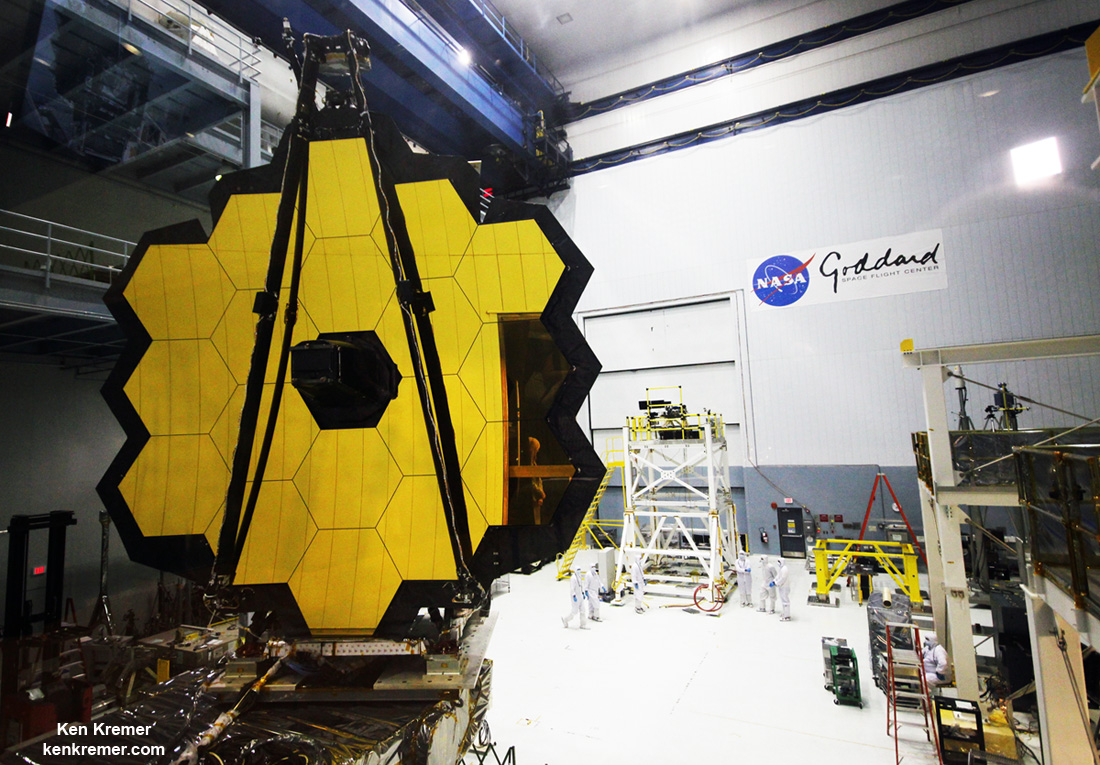
The 18-segment gold coated primary mirror of NASA’s James Webb Space Telescope is raised into vertical alignment in the largest clean room at the agency’s Goddard Space Flight Center in Greenbelt, Maryland, on Nov. 2, 2016.The secondary mirror mount booms are folded down into stowed for launch configuration. Credit: Ken Kremer/kenkremer.com/spaceupclose.com
x



